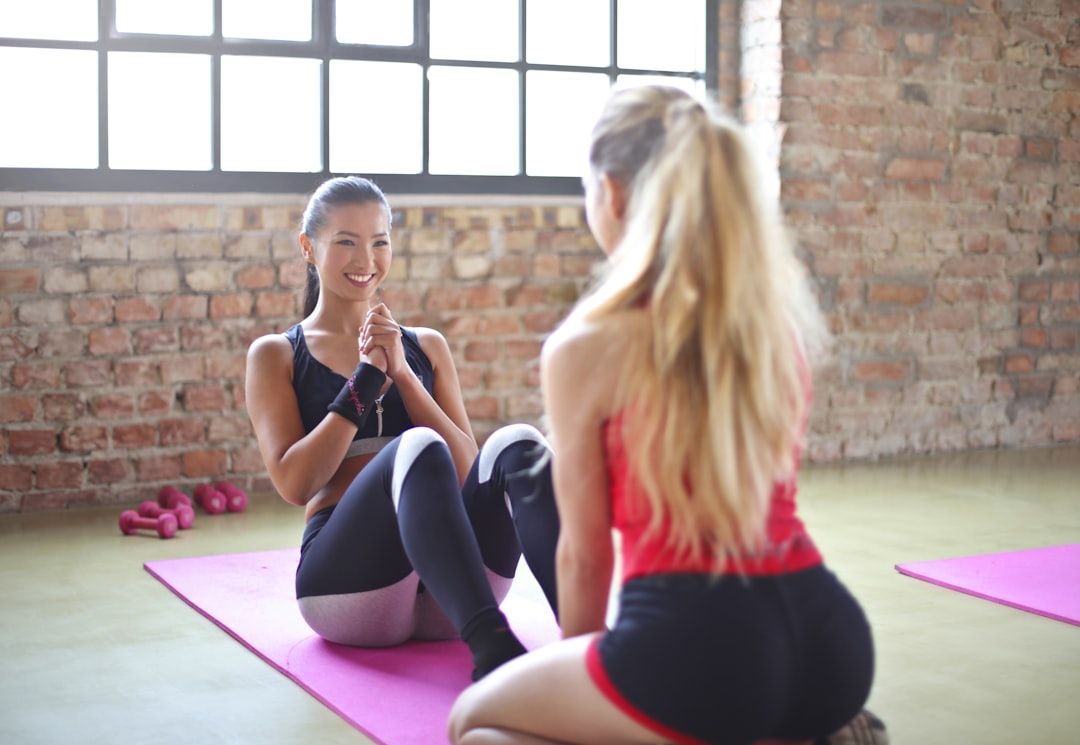Golf Fitness Basics: Easy At-Home Exercises for New Golfers
Master these simple at-home golf fitness exercises designed for beginners to improve flexibility, strength, and power for a better swing without expensive equipment or gym memberships.
Thomas Wilson
Published: April 20, 2025 · Updated: April 20, 2025

Golf Fitness Basics: Easy At-Home Exercises for New Golfers
Golf is more physical than it appears. Behind every effortless-looking swing is a foundation of flexibility, strength, balance, and power. The good news? You don’t need expensive equipment or a gym membership to build this foundation. This guide provides simple, effective exercises that new golfers can do at home to improve performance, prevent injuries, and enjoy the game more fully.
Quick Takeaways
- Good golf fitness focuses on four key areas: flexibility, core strength, balance, and rotational power
- Just 15-20 minutes of targeted exercises 3 times weekly can significantly improve your golf game
- Proper posture and mobility reduce strain and help prevent common golf injuries
- Core stability is essential for transferring power from your lower body to your upper body
- Simple exercises with household items work just as well as expensive fitness equipment
- Balance training improves weight transfer and consistency in your swing
- Rotational exercises enhance the power and control of your golf swing
- Consistency is key - a regular routine delivers better results than sporadic intense workouts
Why Golf-Specific Fitness Matters for Beginners
Many new golfers believe that simply playing more golf will naturally improve their physical abilities for the game. While practice is essential, targeted fitness training delivers specific benefits that can dramatically improve your game:
The Physical Demands of Golf
Despite its leisurely pace, golf places unique demands on your body:
- The golf swing generates forces up to 8 times your body weight through your spine
- A typical round involves walking 4-6 miles while carrying or pushing equipment
- The average golfer performs the same twisting motion 70-100 times per round
- Poor swing mechanics combined with weak muscles create the perfect recipe for injury
Benefits of a Simple Golf Fitness Routine
Just 15-20 minutes of targeted exercises three times a week can:
- Increase driving distance by improving rotational power and flexibility
- Enhance swing consistency through better balance and core stability
- Reduce fatigue during the later holes of your round
- Prevent common injuries to the back, shoulders, elbows, and wrists
- Speed up skill development by creating a body that can perform proper mechanics
“Golf fitness isn’t about bulging muscles or extreme workouts,” explains PGA teaching professional Mark Johnson. “It’s about creating a body that can efficiently perform the movements required in the golf swing, with good posture, balance, and rotationall while minimizing strain.”
Getting Started: Your Home Golf Fitness Space
You don’t need a home gym filled with expensive equipment. A good golf fitness routine can be done in a space as small as 6 feet by 6 feet. Here’s what you’ll need:
Essential Equipment (All Optional)
- Exercise mat for floor exercises (or a carpet/towel)
- Resistance bands ($10-15 for a set with different resistance levels)
- Light dumbbells (2-10 pounds, or use household items like water bottles)
- Stability ball (optional but useful for many exercises)
- Full-length mirror (helpful for checking form)
If you have absolutely no equipment, don’t worry! Every exercise in this guide can be performed using just your body weight or common household items.
The Four Pillars of Golf Fitness
A complete golf fitness program addresses four essential components. We’ll provide simple exercises for each:
- Flexibility & Mobility - Creating the range of motion needed for a full, unrestricted swing
- Core Strength & Stability - Developing the power center that connects your upper and lower body
- Balance & Coordination - Building the foundation for consistent contact and control
- Rotational Power - Training the explosive, controlled rotation that drives the golf ball
Pillar 1: Flexibility & Mobility Exercises
The golf swing requires mobility in specific areas of your body, particularly the hips, thoracic spine (mid-back), and shoulders. These simple stretches target the key areas golfers need most:
1. World’s Greatest Stretch
This comprehensive stretch hits multiple areas important for golf, including the hips, shoulders, and thoracic spine.
How to perform:
- Start in a lunge position with your right foot forward
- Place your left hand on the ground inside your right foot
- Rotate your right arm up toward the ceiling, following it with your eyes
- Hold for 2-3 seconds, then return to the starting position
- Perform 5-8 repetitions, then switch sides
2. 90-90 Hip Stretch
This stretch targets the hip rotators, which are crucial for a powerful, controlled golf swing.
How to perform:
- Sit on the floor with your right leg bent at 90 degrees in front of you
- Your left leg should be bent at 90 degrees to your side
- Keep your back straight and sit tall
- Hold for 30-60 seconds
- Switch sides and repeat
3. Thoracic Rotation Stretch
The thoracic spine (mid-back) needs to rotate freely in the golf swing. This stretch improves that mobility.
How to perform:
- Lie on your side with knees bent at 90 degrees
- Extend both arms straight out in front of you
- Keeping your knees together and on the ground, rotate your top arm across your body and toward the opposite side
- Follow your hand with your eyes and head
- Hold for 2 seconds at the end range of motion
- Perform 10 rotations on each side
4. Standing Shoulder Stretch
This simple stretch helps maintain shoulder mobility for a full backswing.
How to perform:
- Stand tall with good posture
- Bring your right arm across your chest
- Use your left arm to gently pull your right arm closer to your chest
- Hold for 30 seconds
- Repeat with the left arm

Pillar 2: Core Strength & Stability Exercises
Your core is the power center of your golf swing. A stable core helps transfer energy from your lower body to your upper body and protects your spine during the rotational forces of the golf swing.
1. Bird Dog
This exercise develops core stability while training the body to maintain proper spine positionessential for good golf posture.
How to perform:
- Start on your hands and knees
- Keeping your back flat, extend your right arm forward and left leg backward simultaneously
- Hold for 2-3 seconds while maintaining balance
- Return to the starting position
- Repeat with the opposite arm and leg
- Perform 8-10 repetitions on each side
2. Glute Bridge
Strong glutes are essential for a powerful swing and help protect your lower back.
How to perform:
- Lie on your back with knees bent and feet flat on the floor
- Contract your glutes and lift your hips toward the ceiling
- At the top position, your body should form a straight line from shoulders to knees
- Hold for 2 seconds at the top
- Lower back down with control
- Perform 12-15 repetitions
3. Plank
The plank builds endurance in your core, which helps maintain good posture throughout your round.
How to perform:
- Start in a push-up position, then lower onto your forearms
- Keep your body in a straight line from head to heels
- Pull your belly button in toward your spine
- Hold for 20-30 seconds (build up to longer durations as you improve)
- Rest and repeat 2-3 times
4. Dead Bug
This exercise trains your core to stay stable while your arms and legs are movingsimilar to what happens during the golf swing.
How to perform:
- Lie on your back with arms extended toward the ceiling
- Bring knees up to a 90-degree angle
- Slowly lower your right arm overhead and extend your left leg out straight
- Keep your lower back pressed into the floor throughout the movement
- Return to the starting position
- Repeat with the opposite arm and leg
- Perform 8-10 repetitions on each side

Pillar 3: Balance & Coordination Exercises
Good balance is essential for consistent ball striking. These exercises train your body to maintain stability during the dynamic movement of the golf swing.
1. Single-Leg Balance
This simple exercise improves proprioception (your body’s awareness of position) and stability.
How to perform:
- Stand tall with good posture
- Lift one foot off the ground, balancing on the other foot
- Hold for 20-30 seconds
- For an added challenge, try closing your eyes
- Switch feet and repeat
- Perform 2-3 times on each side
2. Single-Leg Romanian Deadlift
This exercise builds balance while strengthening the hamstrings and gluteskey muscles for a stable golf swing.
How to perform:
- Stand on your right leg
- Hinge at your hips, extending your left leg behind you
- Lower your upper body until it’s nearly parallel to the floor (or as far as your balance allows)
- Keep your back flat throughout the movement
- Return to the starting position by squeezing your glutes
- Perform 8-10 repetitions, then switch legs
3. Standing Rotations with Balance Challenge
This exercise combines balance with rotationperfect for golfers.
How to perform:
- Stand on one leg
- Hold a light object (water bottle or small weight) with both hands at chest height
- Rotate your torso left and right while maintaining balance
- Keep your hips facing forward
- Perform 8-10 rotations in each direction
- Switch legs and repeat
Pillar 4: Rotational Power Exercises
Rotation is the essence of the golf swing. These exercises develop the controlled power needed for distance and accuracy.
1. Standing Rotations with Resistance
This exercise builds rotational strength using household items or light weights.
How to perform:
- Stand with feet shoulder-width apart, knees slightly bent
- Hold a light weight, water bottle, or other object with both hands
- Rotate your torso fully to one side with controlled movement
- Return to center, then rotate to the opposite side
- Keep your lower body stable with minimal movement
- Perform 10-12 rotations in each direction
2. Split-Stance Rotations
This exercise mimics the golf stance while training rotational power.
How to perform:
- Stand with your feet in a split stance (similar to your golf stance)
- Hold a light weight or household object with both hands
- Rotate your torso away from your target, as in a backswing
- Then rotate through to your follow-through position
- Control the movement in both directions
- Perform 10-12 repetitions, then switch your stance and repeat
3. Woodchoppers
This functional movement trains the diagonal pattern used in the golf swing.
How to perform:
- Stand with feet shoulder-width apart
- Hold a light weight or household object with both hands
- Start with the weight at shoulder height on one side
- In a diagonal chopping motion, bring the weight down and across your body to the opposite hip
- Control the weight on the way back up
- Perform 10-12 repetitions in each direction
Putting It All Together: Your 15-Minute Routine
Here’s a simple routine that incorporates all four pillars of golf fitness. Perform this routine 2-3 times per week:
Warm-Up (2-3 minutes)
- Arm circles: 20 seconds forward, 20 seconds backward
- Hip circles: 20 seconds in each direction
- Light marching in place: 30-60 seconds
Flexibility (4-5 minutes)
- World’s Greatest Stretch: 5 reps each side
- 90-90 Hip Stretch: 30 seconds each side
- Thoracic Rotation Stretch: 8 reps each side
- Standing Shoulder Stretch: 30 seconds each side
Core Strength (4-5 minutes)
- Bird Dog: 8 reps each side
- Glute Bridge: 12 reps
- Plank: 30 seconds
- Dead Bug: 8 reps each side
Balance & Rotation (4-5 minutes)
- Single-Leg Balance: 20 seconds each side
- Standing Rotations with Balance Challenge: 8 rotations in each direction on each leg
- Standing Rotations with Resistance: 10 reps in each direction
Cool Down (1-2 minutes)
- Deep breathing: 5-6 deep breaths
- Light stretching of any tight areas
Common Questions About Golf Fitness
How often should I exercise for golf?
For beginners, 2-3 sessions per week of 15-20 minutes is ideal. Consistency is more important than duration or intensity. As your fitness improves, you can increase to 3-4 sessions weekly.
When should I do these exercises?
These exercises can be performed any time of day, but not immediately before playing golf. On playing days, save your workout for after your round or do a light warm-up only. On non-playing days, these exercises can be done whenever is most convenient.
Will these exercises help if I have back pain when golfing?
Many golfers experience back pain due to poor mobility and weak core muscles. These exercises may help, but if you have existing back pain, consult with a healthcare professional before beginning any exercise program.
How soon will I notice improvements in my golf game?
Most golfers notice improvements in how they feel during their swing within 2-3 weeks of consistent exercise. Physical changes that impact performance (increased flexibility, better balance, more power) typically become apparent after 4-6 weeks of regular training.
Do I need to do all these exercises?
While the complete routine provides the best results, even performing just a few of these exercises regularly will benefit your golf game. If you’re short on time, focus on the thoracic rotation stretch, bird dog, and standing rotationsthese target the most critical areas for golf.
Conclusion: Consistency Is Your Key to Success
The most effective golf fitness program is the one you’ll actually do consistently. These simple exercises require minimal time and equipment, making them perfect for beginners looking to improve their golf game from home.
Remember that golf fitness is not about intense workouts or dramatic physical transformations. It’s about creating a body that can efficiently perform the golf swing with reduced risk of injury. By incorporating these exercises into your regular routine, you’ll build a foundation that supports both your immediate enjoyment of the game and your long-term development as a golfer.
Start with just 15 minutes, 2-3 times per week, and you’ll be amazed at how much better you feel on the course. Your swing will become more fluid, your energy will last throughout all 18 holes, and you’ll set yourself up for a lifetime of enjoyable, pain-free golf.
FAQs About Golf Fitness for Beginners
How is golf fitness different from regular fitness training?
Golf fitness specifically targets the movements and muscles used in the golf swing, with a focus on rotational mobility, core stability, and balanced strength. Unlike general fitness that might prioritize symmetrical development, golf fitness acknowledges the asymmetrical nature of the golf swing and works to create both stability and mobility in the appropriate areas.
Can these exercises help reduce my risk of golf injuries?
Yes. Many common golf injuries (back pain, golfer’s elbow, shoulder injuries) stem from poor mobility, weak stabilizing muscles, or improper mechanics. These exercises strengthen vulnerable areas and improve the body’s ability to handle the stresses of the golf swing, significantly reducing injury risk.
I’m a senior beginner golfer. Are these exercises appropriate for me?
Most of these exercises can be modified for any age or fitness level. Seniors should focus particularly on the mobility and balance exercises, starting with shorter duration holds and fewer repetitions. If you have any health concerns, consult with your doctor before beginning any new exercise program.
Should I do these exercises on days I play golf?
Light mobility work and gentle stretching can be beneficial before playing, but save the more demanding exercises for non-playing days. Performing a strenuous workout immediately before playing can temporarily reduce power and coordination.
How can I tell if I’m doing the exercises correctly?
Proper form is more important than repetitions or intensity. Using a mirror or recording yourself can help check your form. Focus on controlled movements rather than speed, and if something causes pain (different from normal muscle exertion), stop and reassess your technique.